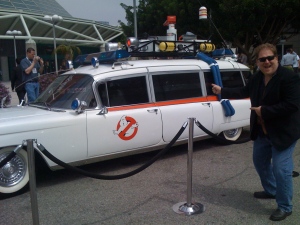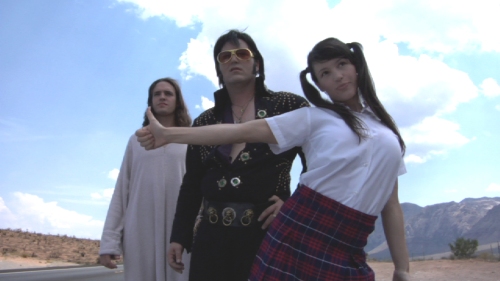When I was in the eighth grade, my buddies would come over almost every day after school to my parent’s apartment to play the board game, RISK. It became a ritual and soon the topic of conversation between us, each day at lunch and recess. In fact, one time three or four female classmates came to the apartment, pleading for us guys to give up the game and spend some time with them. We said, “no way!” Ah, the decisions we make!
I’ve always been a fan of games, the more complex the better. I’ve played board games, cards, Dungeon and Dragons. I enjoy the social interaction, the elements of fantasy. After all these years it shouldn’t be a surprise that I would take my filmmaking experience and put it to use in video games, but it wasn’t until last year when my company, Unconventional Media produced the live action portions to the Electronic Arts (EA) video game, “Need for Speed: Undercover” that I really began to understand the tremendous possibilities of video games and interactive storytelling.
Last week, I had the opportunity to attend the Electronic Entertainment Expo, simply known as E3, at the Los Angeles Convention Center. Presented by the Electronic Software Association, this is the event where new games and gaming inventions are unveiled each year. The roll-out was impressive, the technology amazing. I was in awe of the big LED televisions displaying such realistic, spot on graphics. However, what really caught my attention this year is the amount of immersive game play devices being released. Nintendo introduced a device, the Wii Vitality Sensor, that clips to a player’s index finger and reads their pulse into the game. This is the same company that has been so successful with the Wii Fit, which helps a game player lose weight by bouncing on a board that feeds the movements into game play. Basically, your movements are the game characters movements, so if the game requires your character to run or jump, then you, the player must do the same. A hell of a workout. Ubisoft Entertainment introduced a competitive, more serious fitness title, “Your Shape” that actually customizes the workout based on body type.
However, the Project Natal for the XBox really knocked me over. You’ve got to watch the YouTube video attached to really understand the interactive possibilities. You can fully immerse yourself into a virtual world.
As I wrote in this blog last October, after the “E for all Expo,” the philosophy behind my company, Unconventional Media, is to deliver a fresh angle for new entertainment, incorporating movie storytelling into game play. This seems to be a growing, exciting trend in the business, although much of it remains tied to feature film releases like “Batman,” “Watchman,” “Harry Potter,” etc.. I do admit it was fun to stand next to the original Ghostbusters Ecto-1 vehicle, parked outside to promote the Ghostbuster Video game. I believe with the immersing technology of virtual game worlds, we can create storylines to form a new kind of entertainment. It’s like my fictional screenplay, “Press>Play” as reality. We enter the story, virtually.
Since I’ve always enjoyed the social aspects of game play and find the solo aspects of most video games a little lonely, like playing Solitaire, you’d think I’d be a big fan of online gaming. I’m fearful that getting involved in games like “World of Warcraft” and other multi-player online activities will become such an addiction that I’ll never go outdoors again. Hell, I won’t even play “Mafia Wars” on Facebook. However, after viewing the EA and LucasArts upcoming release, “Star Wars: The Old Republic,” a multiplayer, online game based on the franchise, but set in a different time period, I may be hooked.
After a couple of days of the loud noises and visual attacks of E3, I had to make an escape. I sat down with some friends and played “Joan of Arc,” a good old fashioned board game. The game takes place during the 100 year war between England and the provinces of France. There are castles, battles, land grabs, even the plaque, but there are also alliances between players, negotiating between teams, the human element. I miss this part of game play in video games. Sometimes, it just feels like it’s you against the machine. I like the social interaction. Maybe, I’m just a board game geek. Anyone up for a game of RISK.






